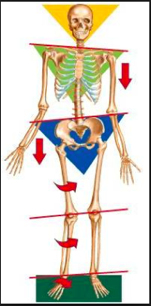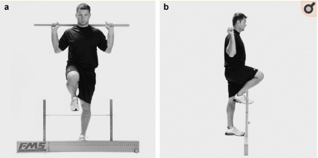The Threesome: Pain, Flexibility and Muscular Compensations (emphasis on the hip)
Hi my name is Dr. Marlene Mireles, Physical Therapist with Whole Motion Therapy & Wellness. Most don't realize that hip flexibility has a role with low back, hip and knee pain. By the end of this post you will know how to identify asymmetries in your body by observing your posture with and without movement. You will begin to understand how the body compensates.
We will start by briefly reviewing the anatomy of the hip. The hip is comprised of the head of the femur and the acetabulum of pelvis. Which makes it a ball and socket joint. The hip is able to perform flexion, extension, abduction, adduction, internal and external rotation. It is comprised of 17 muscles that help it perform these motions. Most of those muscles have more than one job and 5 cross the knee joint. So as you can imagine if any of those 5 muscles are affected your knee will be affected too.

What I refer to as the threesome is: Pain, Flexibility, and muscular compensations. Muscular compensations occur when a prime mover (a muscle that typical performs a movement) is not performing well or at all. When this happens, the body adapts, and other muscles pick up the slack. When these compensations take place a lack of or increased flexibility can happen putting muscles in a position where they are overworked or underworked. This muscular imbalance can put you at risk for injury during functional movement, thus can lead to pain. There are also situations where an injury takes place and the pain causes the body to react by producing muscular imbalances. So in short, pain can be the cause of hip flexibility issues and compensations or can be the result of compensations caused my flexibility issues. Crazy Right!
Let's use glutes as an example of a muscle that is commonly affected with hip and back pain patients. First, let’s find out if your glutes are firing correctly. This test may seem so simple but if you have any weakness to your glutes you will find it very difficult. To test your glutes you will lay down with your knees bent and perform alternating glute sets 10x. If this was difficult for you than your glutes are not firing correctly or not at all.
Now that we have identified who has weak glutes let’s talk about the domino effect of having weak glutes. If you have weak glutes than your hamstrings began to overwork and the tension in the muscle is compromised. When they start to work too hard, your quads may become dominant in stabilizing your hip and knee. When you quadriceps become dominate it can cause patellar tracking issues by pulling your knee cap up. Simultaneously, your TFL is also over working and begins dominating your glute medius. This can lead to ITB friction syndrome and your ITB begins pulling your knee cap laterally. This is an example of how hip issues can result in knee pain. There is also hip flexor deficits that can result in all of this but I will save that for another post. This domino effect does not happen to everyone with weak glutes. I am telling you about the domino effect, so you have an idea of how the body is connected and how the threesome plays a role in it all.
Let's talk about another scenario. If you have an injury your body will go into protective mode and began building compensatory patterns / compensations which leads to lack of flexibility for one muscle and increased flexibility for another; possibly on the other side of your body. These asymmetries affect your posture and put you at risk for injury during functional movements or can increase your current pain. Next, we will find out if you are relatively symmetrical or asymmetrical by analyzing your posture. Stand in front of the mirror or grab a partner and look at your shoulder height, hip height, knee height. You will also note if you or your partner have an increased rotation on one leg vs. another. From the side, you will look at the curve of you or your partner's spine and note if their hip is rotated forward giving them an increased low back arch (anterior pelvic tilt) or backwards giving them a flatter low back (posterior pelvic tilt).

If you have found significant asymmetries this could indicate you have a muscular imbalance. Now that you have assessed your posture without movement, we will look at your posture and symmetries, or lack thereof, while moving using gross functional movement screens, so we are not just looking at the hip here. While performing this functional movements remember your findings without movement.
The first functional movement screen is an overhead squat with a dowel. Are you able to perform this task without leaning your trunk too far forward, knees translating over your toes, and without your knees caving in? Do you have full shoulder range of motion?

Now perform a hurdle step with dowel. Are you able to perform this task while keeping your hips level, without loss of balance, and without significant balance reactions at your hip, knee and ankle?

and lastly, an inline-lunge with dowel. Are you able to keep your back in neutral, maintain your balance, and keep your back toes touching the ground?

If you have found significant deficits while performing these tasks than your fundamental functional movements are potentially compromised by muscular imbalances encompassing flexibility, muscular compensations and strength deficits. A Physical therapist will thoroughly assess your functional movement patterns that can be contributing to your pain or lack of performance. If you are in pain we can find the root cause of your pain by utilizing our extensive expertise on anatomy and the relationship each body part has with another.
Reminder: 25% off your initial physical therapy evaluation
code: TysonsBJJ
until 8/10/19.
Resource and pictures from FMS: https://www.ncbi.nlm.nih.gov/pmc/articles/PMC4060319/


